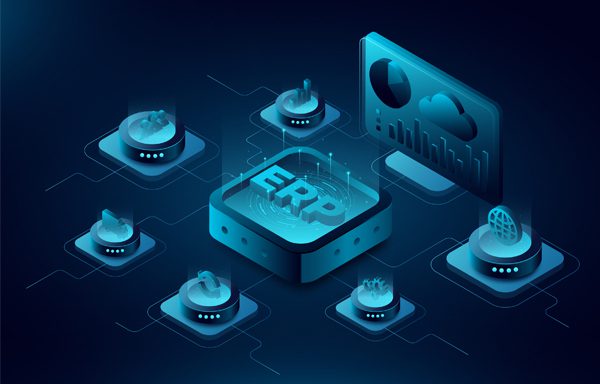An ERP solution makes managing records of students, professors and administrators simpler than ever – providing your institution with greater automation and effective administration to reduce costs while yielding greater returns on investment.
Logistical complications associated with exam evaluations are further reduced through onscreen marking, including eliminating examiner travel and storage costs.
User-friendly interface
Management of an educational institution can be a challenging and multi-layered endeavor that demands oversight over numerous branches and bodies. Luckily, several software systems exist which make managing its functions simpler.
On-screen evaluation systems help reduce time taken for evaluation by automating marking processes. This cuts down on human errors while increasing accuracy of results and saving money through reduced expenses on travel, dearness allowances and stationery purchases.
Students also enjoy the added advantage of being able to quickly request a copy of their evaluated answer sheet, enabling them to check the authenticity of their grades and identify areas for improvement. Furthermore, educational institutions can use an on-screen evaluation system that adds grace marks based on subject and performance – increasing students’ chances of scholarship eligibility or admission to top universities. Furthermore, the software generates detailed reports on student performance that provide educators with invaluable insights for tracking progress and refining teaching methods.
Automation
Digital evaluation systems are powerful tools that make examinations simpler for all parties involved, including students. By automating processes like question paper generation, e-delivery, on-screen marking of answer scripts and revaluation as well as compiling mark sheets/certificates and publishing results quickly and cost efficiently, digital evaluation systems reduce administrative and logistical expenses drastically while making examinations less time consuming overall.
Security-wise, it provides an extremely high degree of protection through strong encryption, user authentication, and access control features. Furthermore, its convenience for faculty members and invigilators eliminates the need to carry physical answer sheets around; making the evaluation process faster and more accurate than ever.
Coordination between evaluators and students is minimized and logistical arrangements between colleges eliminated, streamlining administrative processes to allow staff to respond quickly to inquiries; average response times have been shown to decrease by 50% through this self-service model; further allowing educators to focus more on supporting and inspiring their students while simultaneously decreasing grading times by 50% while simultaneously decreasing risks by decreasing human bias in decision making processes.
Convenience
An efficient digital evaluation system can save both time and money by streamlining complex processes. Furthermore, this allows you to publish results quickly and accurately as well as give examiners easy access to scripts on their systems from anywhere without the need to travel for physical copies of answers to assess.
Digital evaluation systems also allow institutions to gain valuable data analytics about marks issued by different teachers, and how long it takes for an evaluation session of scripts. This provides valuable insights that institutions can use to enhance faculty performance and promote transparency during examination processes.
This system also enables schools to scan and digitize all answer sheet copies, removing the need to manage large piles of paper while decreasing storage space and cost. Furthermore, scanning can simplify moderation work such as rechecking work. Furthermore, result compilation and mark sheet generation become less time consuming, human errors become reduced, photocopy requests from students become obsolete – helping you run your educational institution more efficiently than ever.
Security
Digital evaluation system technology has quickly become an essential element of higher education. It enables educators to digitally assess answer scripts more quickly and accurately than traditional methods while helping reduce costs and simplify evaluation processes overall. When selecting a digital assessment platform it’s essential that it meet all your specific needs.
Privacy of students and invigilators is also ensured with this digital assessment system, to protect personal data from being shared or accidentally used unethically. Manual evaluation can result in mistakes; by contrast, human mistakes are eliminated with digital assessment systems, increasing accuracy and transparency in results.
Apart from its security features, an effective digital assessment platform should feature an easy-to-use interface that makes navigating and using it simpler for faculty and staff, maximizing its benefits for them. Furthermore, such platforms should detect errors quickly so teachers don’t waste their time correcting them themselves and providing detailed reports to track student progress or identify learning trends – this enables educators to tailor their teaching approach more efficiently for increased overall student outcomes.
Reporting
Digital evaluation systems can significantly enhance online examinations, making the entire process simpler for students, teachers, and administrators alike. Not only will costs be cut but result declaration will become simpler as well as the process becoming more accurate.
An important feature of a digital evaluation system is its ability to generate detailed reports on student performance. These can help educators track trends in student progress, identify learning gaps and devise better teaching strategies – and also generate tamper-proof transcripts and grade books that can safely be shared with both students and parents.
Higher education institutions find the on-screen evaluation system an invaluable asset. It lessens examiner and invigilator workload, eliminates grade errors, and allows colleges to announce results quickly – particularly colleges using traditional paper exams and marking methods which entail many evaluators and carry a risk of fraud. Furthermore, this system ensures all evaluatees use the same set of questions which increases accuracy while enabling institutions to award grace marks for specific subjects or performances.


